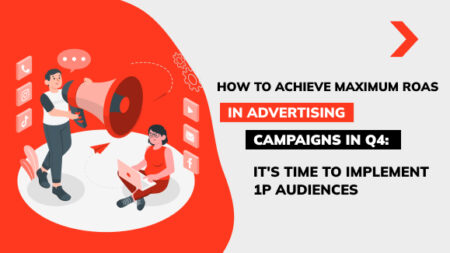How to Do a PPC Audit
Digital advertising delivers twice as many visitors to a website as SEO. However, if that isn’t occurring at the required volume, the next best option is to conduct a PPC audit.

Whether you’re attempting to build PPC strategies to better accounts that are sinking and you’re not sure why, or you’re just a company trying to figure out where to begin, a PPC audit with the following PPC audit guide is the way forward.
What is a PPC audit?
Auditing is a thorough research of ongoing pay-per-click (PPC) campaigns to locate pain spots and maximize efficiency. Audits comprise a detailed insight into all aspects of the campaigns you’ve executed over a specific time.
It analyzes keywords, ad text, landing pages, conversion tracking settings, and budget management. The purpose is to identify potential flaws and improve the overall performance.
The Benefits of Conducting a PPC Audit
This way, you can solve inefficiencies in ad circulation, covering issues you can be unaware of that are wasting a budget. It’s better to delay an audit after making changes. You rely on statistics to convey what’s happening in an account, so you should have a few months’ data.
Enhancing Campaign Performance
The primary purpose is to improve the overall productivity of pay-per-click campaigns by assessing essential components such as keywords, ad copy, landing pages, and bidding. This improves click-through rates (CTR) and conversion rates with returns.
Identifying Wasted Spend
A PPC audit will help you identify where to save money without sacrificing ROI. It could also assist you in figuring out the root of the problem. You could discover that an ad copy is insufficiently persuasive to achieve repeated clicks.
Improving Conversion Rates
Running an audit regularly helps the strategies be relevant and efficient; it allows you to align campaigns with industry best practices. Regular audits will result in higher CTR, lower cost-per-click, and improved conversions.
Gain Competitive Insights
To win the competition with a PPC campaign, you must first grasp their strengths, strategies, and everything else they do. When you understand their targeted keywords, bidding, and ad copy, you can locate gaps in their approach.
Optimize Keyword Strategy
If you audit existing campaigns, there is a chance you’ll discover fresh keyword chances to use in the future. This is especially critical if you have gathered enough information about buyer behavior and your suggested customer journey.
Enhance Landing Page Experience
You may find that patterns on the landing page are too bright. Then, look at the pages of others and see how they employ a more muted color palette, which is more persuasive. You’ll want to back it up with analytics; this may help you understand precisely what needs to be improved by glancing at the website.
PPC Audit Checklist – 10 Steps
The lack of control causes missed potentials and mismanaged budgets, reducing ROIs and lean operations.

With this PPC audit checklist, you can revise strategies confidently, fuel better results, and ensure that every cent delivers.
Step 1: Define Your Goals
Firstly, set overarching objectives. Before diving into the data, building a stable framework is necessary; it begins with a clear insight into these goals and how campaigns contribute to them. Consider whether they can generate sales or provide a flow of qualified leads. Defining these primary goals is a compass for the audit, ensuring each phase is aligned with the image.
Clear Objectives
Businesses that clearly define their objectives could deploy their budget and PPC management. If the goal is to generate leads, a company can allocate resources to lead-generation avenues, content marketing, and conversion optimization.
Key Performance Indicators (KPIs)
Similar analytics are statistics that assist you in calculating how effective you are in meeting goals. These metrics are usually customized to each aim and taken over time. KPIs include website traffic, lead conversions, customer acquisition, and ROIs.
Step 2: Analyze Your Keyword Performance
Your keywords must be directly related to ads and the message you want to convey; it makes your ads and targeting more relevant, improves the quality score, and enables you to maintain a lower CPC. Monitoring ensures you’re on track to meet objectives by picking keywords for the rank to gain data into the PPC strategy. It also requires tracking the competition to identify keyword gaps.
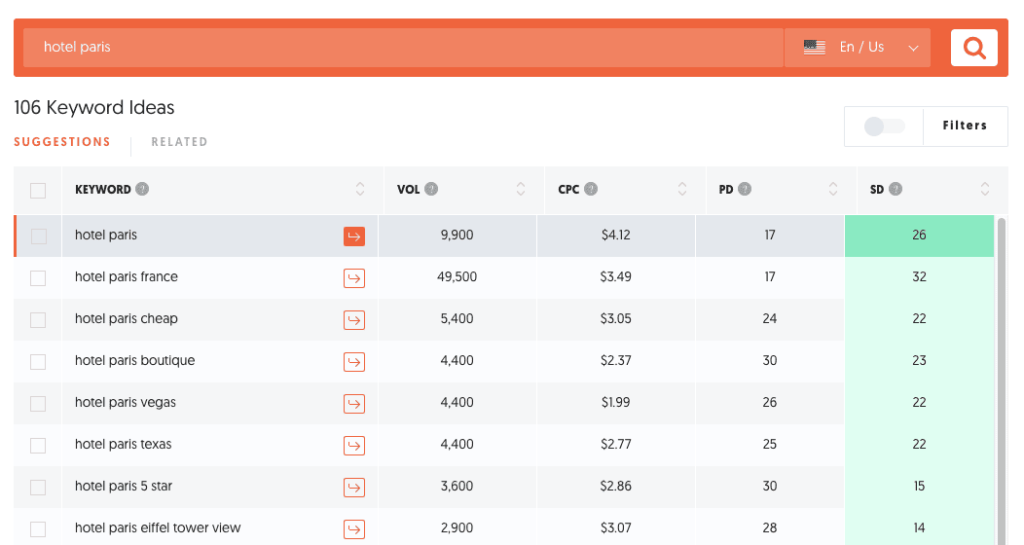
Keyword Relevance
This score helps you focus on effective terms. By rating relevance, you could focus your effort on the terms and categories that are most critical to you. Having these keywords in the campaigns ensures that ads are seen by the right viewers at the correct times.
Search Term Report
A report shows you what queries activate the ads and how well they perform. This report will also assist you in coming up with new content for a relevant page that’s actually what clients want. This report might help you optimize the keywords so your ad appears only for applicable searches.
Keyword Match Types
These options specify how closely a keyword must match the search intent for an ad to be considered in the auction. Google Ads provides match types on their network, like exact match, phrase match, and broad match, each with various levels of flexibility.
Step 3: Evaluate Ad Group Structure
Check these groups to make sure they’re correctly structured and match the message you’ll convey. Ideally, one ad group must feature one of the product categories; it’ll help you collect more accurate data and improve performance.
Logical Grouping
The objective of ad groups is to organize and structure a campaign logically and comprehensively. This could enable you to allocate your efforts to products or services while targeting the intended ads to specific social groups.
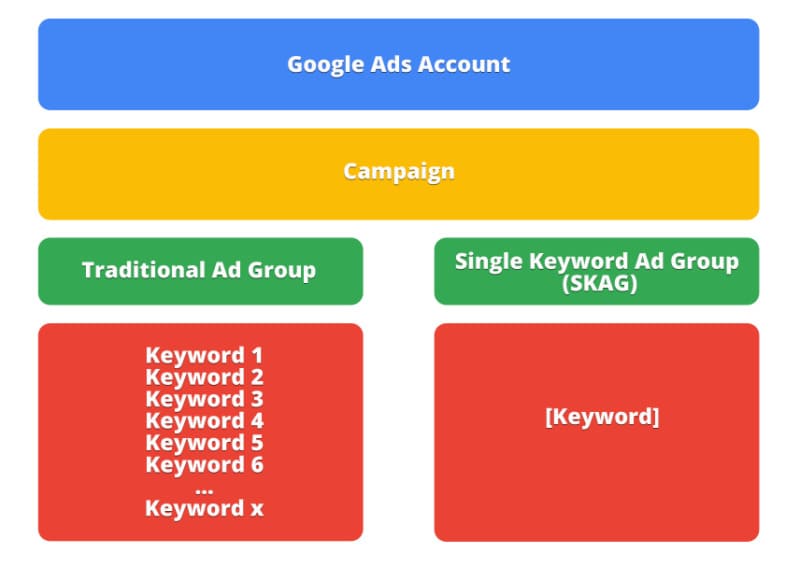
Ad Copy Relevance
Google Ads calculates how well an ad campaign matches the search intent, defined by keywords, ads, and relevant pages. Relevance is calculated using the positive and negative feedback we anticipate an ad will receive from the target audience. The more positive comments an ad is expected to receive, the higher the relevance score.
Ad Extensions
This point can be included in paid advertising. Extensions, which include site links and CTA buttons, help to raise ad quality. The advantage of ad extensions is that they help an ad stand out, mainly if competitors don’t use them. Thus, ad extensions will enhance your ad rank.
Step 4: Assess Quality Score
The network assigns quality scores, measuring the user experience of given keywords. When it’s high, it indicates that the parts are correctly aligned, resulting in lower costs and higher rankings. In contrast, a reduced quality score can highlight areas for adjustments that can delay campaign operation and increase total ad fees.
Quality Score Factors
This measurement ranks advertising, keywords, and relevant pages on a scale of 1 to 10. Multiple variables, including the relevance of a copy to the keyword, the projected CTR, and the landing page experience, figure out this score.
Improvement Strategies
To raise QS, consider reassigning campaigns and ad groups and changing low rates. This way is an effective method to optimize the structure. When you change things around, the history is lost, but the history used to calculate the QS is maintained.
Step 5: Review Bid Strategy
The next step is to analyze the anticipated strategy and budget allocation. These variables are critical in delivering the visibility of ads, the costs you spend, and the productivity of ongoing campaigns in meeting their goals. The goal is to guarantee that your bids are optimized to obtain results while optimizing the budget and providing the final ROI.
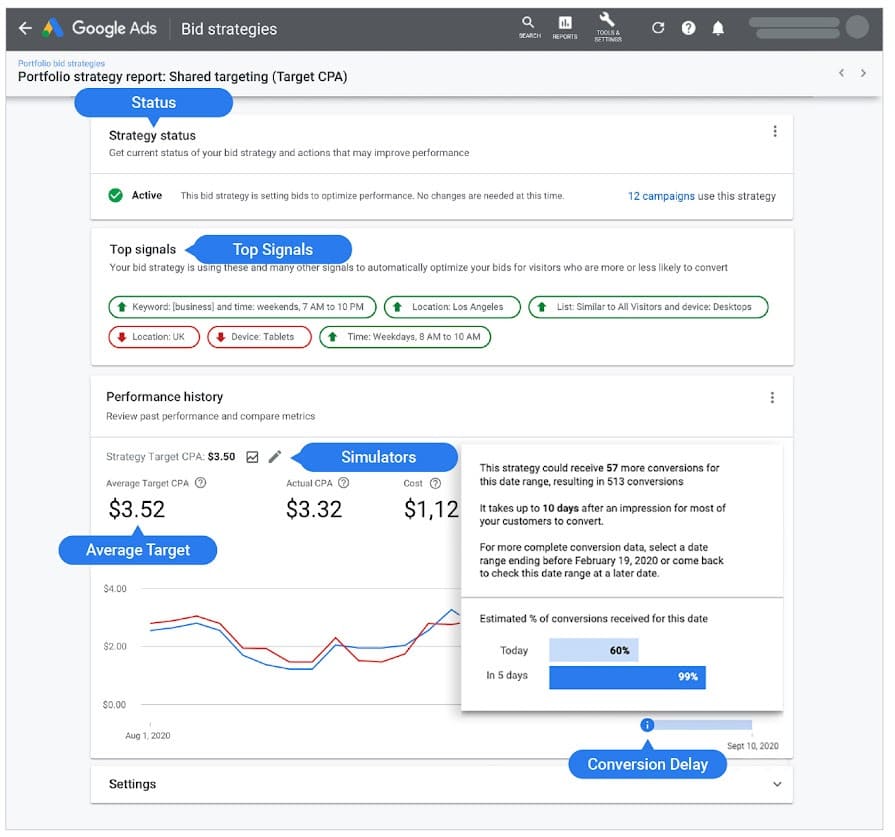
Bid Types
Manual bidding provides complete control over bids and enables you to set a particular CPC for each term; it’s perfect for tracking budgets and bids for high-performing keywords. Automatic bidding employs AI to refine bidding based on criteria like user location and device kind. This method suits an extensive PPC campaign with some ad groups.
Bid Adjustments
This is a parameter on the amount you offer in an auction, providing freedom over bidding strategies. Google Ads calculates bid adjustments in percentages and supports increases and declines. This allows you to customize the frequency of ads appearing based on queries. You’ll choose to bid higher or lower for clicks from specific periods.
Bid Optimization
It results from improved bidding combined with a clever advertising spend allocation. Proper optimization lets you know how much you pay for each click (including conversion rates) to improve advertising ROI.
Step 6: Examine Negative Keyword List
Negative terms in Google Ads are essential for improving campaigns since they prevent your ads from appearing on irrelevant searches. Before grasping negative keywords, consider objectives and the target audience to define which types of queries you want to reduce. Adding negative keywords may improve ad targeting, reduce wasted spend, and boost campaign productivity.
Negative Keyword Effectiveness
They can help to enhance click-through rates by exposing the Google Ads accounts to more impressions, lowering wasted clicks, and getting those who click on your ad; it not only saves the budget, but it also enhances your ROAS, ensuring that the overall budget is spent to target the appropriate people.
Expand Negative Keyword List
You could utilize the Keyword Research Tool from the Google Ads interface. Enter 2-4 keywords you want to target, then check the Keyword field for irrelevant queries that won’t activate the ads. Click each keyword’s arrow in the Match Type column to add a negative match.
Step 7: Analyze Landing Page Experience
The experience on these pages reflects how users perceive your page after clicking an ad or link. A reasonable journey is consistent with user purpose, loads quickly, and offers a clear path to conversion. To assess the efficiency of a landing page, you must monitor a wide range of data that reflects user behavior, engagement, and performance.
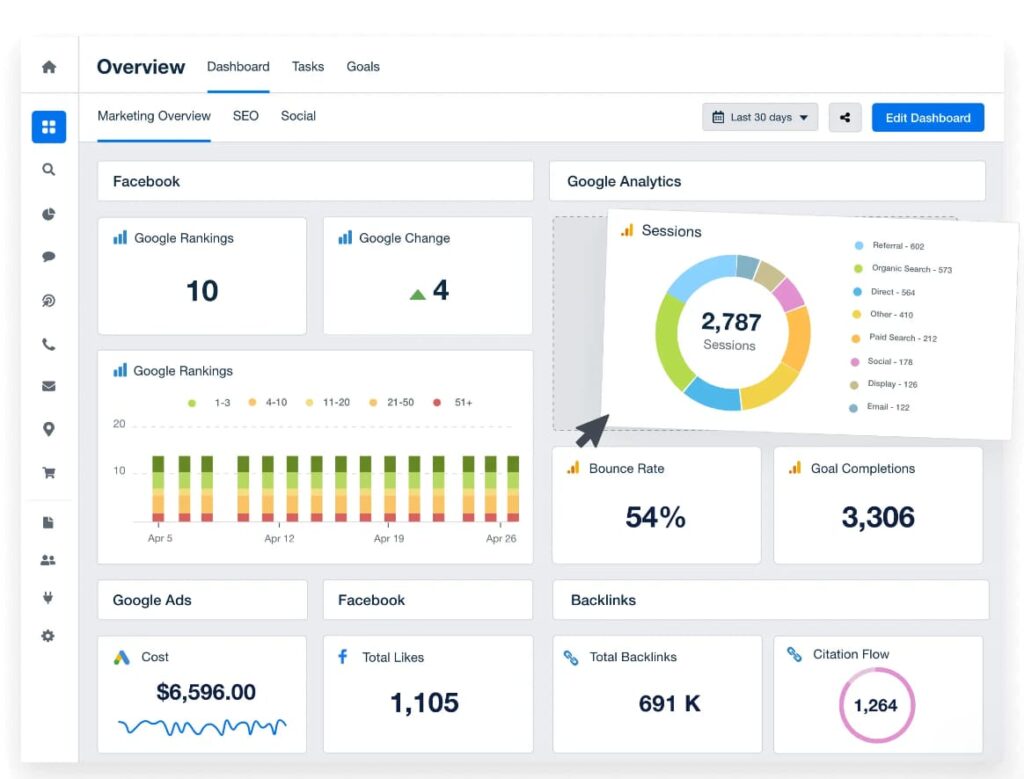
Page Speed
Since it directly impacts your QS, you should optimize page speed to improve the experience on relevant pages. Slow-loading pages can frustrate visitors, resulting in a lower QS, reducing ad visibility, and increasing cost-per-click.
Mobile-Friendliness
Simplicity is more than just a design; it’s a critical strategy. Consider users scrolling on the go while holding a coffee in one hand when looking for solutions. A mobile-friendly design guarantees that elements do more than just attract attention; they also have it.
Clear Call-to-Action
The CTA is the most critical component on this page since that’s where conversions happen. A not well-designed or unclear CTA may leave users perplexed or indifferent. Make it actionable by utilizing simple phrases like “Get Discount.”
Step 8: Review Conversion Tracking
If you’re investing money into a PPC campaign but seeing little return, it’s possible that incomplete conversion monitoring is the reason, rather than ineffective targeting or bidding. This leads to inaccurate data, missing optimization chances, and wasted costs on underperforming campaigns.
Conversion Tracking Setup
We will need a website to display your Google tag code, the capacity to change it, and the web developer to add a code snippet onto the property. The initial step is to create an action within the Google Ads network. Then, if you set a Google tag and make a conversion action with a URL, you’ll see data from that conversion.
Conversion Goal Optimization
You can begin the process by analyzing the aim of advertising; it may appear simple, but any firm employs the site to fulfill multiple aims. After you’ve identified all goals, the next step is to assign a value to these actions. It’s simple to correlate a number with a user placing an order on the site.
Step 9: Evaluate Device and Location Targeting
This targeting enables you to advertise to people using a particular device, like tablets or phones. Device targeting will help you reach customers, increase efficiency, and maximize ROI. Local targeting enables you to find people residing in your vicinity; it promotes local business growth while providing an improved user experience.
Device Performance
Don’t turn off mobile-based campaigns without conducting an analysis; you may be turning off a profitable piece of a PPC account. More extensive models can analyze the value precisely. To target effectively, consider the device choices of the audience and optimize bidding and ad types.
Location Targeting
It helps you to define where PPC ads should be displayed based on geography, like regions, cities, or even a certain radius around a given spot. This aids in reaching the correct audience in the right place, increasing efficiency. Use it by selecting the locations you want to advertise with PPC.
Step 10: Conduct Regular PPC Audits
Audits should be performed on a regular schedule. Many experts advise conducting a thorough audit at least once every 6 months to maintain a PPC account. Routine audits guarantee that your business adheres to reporting standards and is transparent regarding financial status.
Scheduled Audits
They should be integrated into the ongoing strategy. Set a regular auditing schedule weekly, monthly, or quarterly to ensure that a campaign operates smoothly and provides the best results. Making audits a standard of the process protects the budget and locates the framework for optimization that fuels the future.
Stay Updated
To meet marketing trends, read industry news, follow PPC thought leaders, participate in online forums, subscribe to newsletters, and continue the education to keep your PPC audit expertise up to date. Remember these five things, and you’ll be well-prepared to stay ahead of the competition.
Creating Your PPC Audit Report
Before developing the final write-up, you must create clear and meaningful goals to drive your reporting efforts. Examine which PPC ads are working well and which need changes.
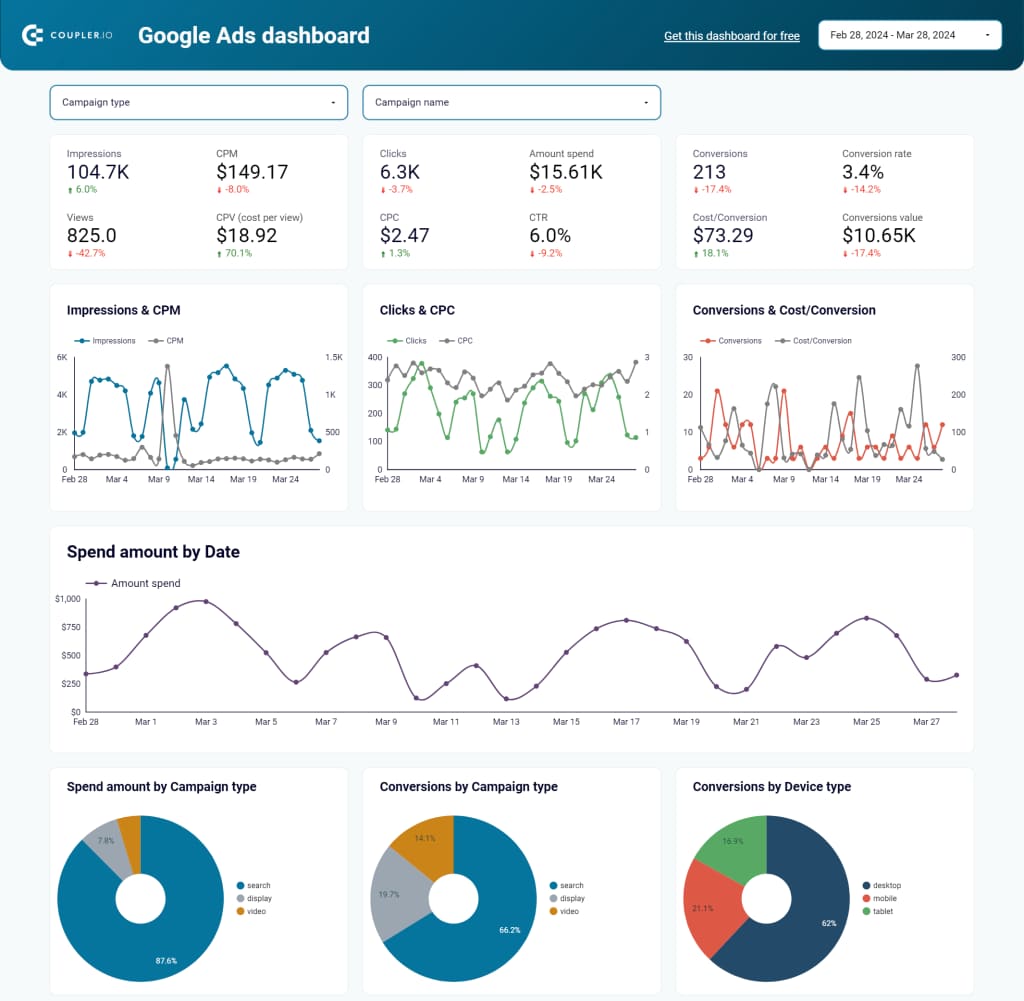
The goals you establish for a PPC audit report vary depending on whether you manage a client’s account as an advertising partner or as an in-house team.
Structuring Your Audit Report
A report should have a title page, a table of contents, and an executive summary. The introduction should clarify your audits’ objectives, scopes, and approaches. This section of the report explains what this paid search audit was about, why risk areas must be managed, and what the marketing team introduced in the piece.
Prioritizing Actions Based on Findings
Crafting an effective audit report is critical for ensuring that primary stakeholders understand and comprehend the findings of the auditing process. High-quality audit reports are created with the audience in mind, and using a human-centered approach provides more value to readers and inspires stakeholders to make decisions. It saves time since it’s clear and actionable.
PPC Audit Tools
Errors can appear during a campaign, even if everything is precisely planned. Using an audit tool simplifies discovering such problems and adjusting the campaign before it goes downward.
The audit attempts to provide a complete campaign analysis of ad spend, search growth, and keyword strategy, considering multiple indicators such as CVR, CPC, and ad relevance. Using these tools can help to improve efficiency and accuracy. They can help discover data trends you wouldn’t have noticed without this PPC audit guide.
PPC tools can also provide insights into market reach and competition, enabling you to develop more effective strategies. Analytics solutions also include real-time execution tracking, allowing you to maximize campaign performance.
WordStream Google Ads Performance Grader
It’s a management tool with multiple features for auditing campaigns; this delivers precise keyword performance analytics, adjustment advice, and suggestions for relevant pages. WordStream also includes a Performance Grader, which evaluates the health of a campaign and highlights drawbacks.
Optimizely
This sophisticated tool looks deeply into your campaign data, providing insights into keyword performance with the best adjustments to improve ROAS. Optmyzely also provides an in-depth view of the performance, ensuring that all parts work seamlessly for peak metrics.
SEMrush
On this platform, the Advertising Research option enables you to evaluate the campaign’s keyword strategy and ad creatives and get a complete picture of the overall operation. It also assists you in finding untapped prospects and provides useful analytics for evaluating your ad effectiveness.
SpyFu
The company offers a PPC research tool that may help you determine what keywords, advertising, and methods a competitor applies. SpyFu can help you maximize advertising efforts, identify fresh opportunities, and avoid costly mistakes.
SE Ranking
That software is widely used for tracking the rank of specific keywords. SE Ranking will sufficiently engage most clients looking for a low-cost and full-service package of tools to assist them with SEO and PPC operations and even SMM on Facebook.
Google Analytics
It’s a network that helps you grasp what visitors do when they visit the website by gathering data on buyer journeys. Google Analytics provides data for various strategies. Collecting this data enables businesses to view what needs to be improved. You can also calculate ROI by pinpointing conversions.
FAQ
How often should you conduct a PPC audit?
You should monitor your campaigns at least once every week. Keep an eye on how they’re doing so you can make quick improvements if necessary. However, if you’re just starting or running a large campaign, you should check in more frequently, perhaps daily, until it’s stabilized.
Should I hire an expert for my PPC audit?
If you’re feeling overwhelmed, consider hiring a PPC company or professional to assist with the auditing and optimization process. They can review every part of the campaign circulation to ensure that they’re operating in the right way and assist you in developing an effective advertising strategy.
How do I prioritize actions after completing a PPC audit?
Make the most of your decisions by focusing on the most important aspects. Focus on resolving tracking mistakes, adjusting poor campaigns, reallocating spending to other keywords, and increasing ad relevance. Then, make strategic improvements such as advanced targeting and trying new opportunities.
Can I perform a PPC audit without external tools?
Definitely, you may execute a manual audit by reviewing Google Ads account structure, keywords, ad performance, bidding strategies, ad copy, relevant pages, and conversion tracking relying on data gathered from networks such as Google Ads or Google Analytics.
What are common mistakes to look for in a PPC audit?
Relying too heavily on broad-match keywords can cause ads to appear for unrelated searches. Failure to employ negative terms may result in ads displaying irrelevant search phrases. Overlooking long-tail keywords which may have lower competition and a higher conversion rate.




